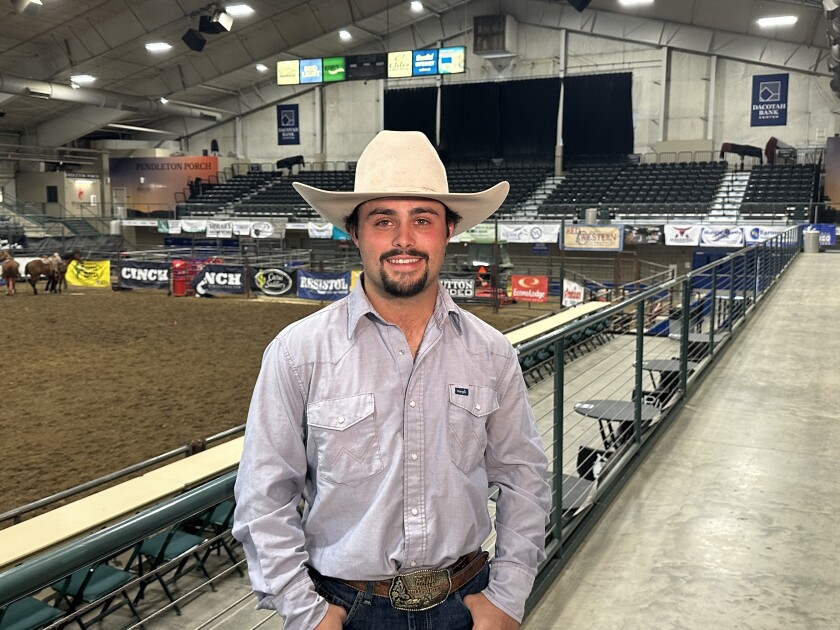BROOKINGS, S.D. — For most people, looking a mad bull straight in the eyes doesn’t sound like a fun way to spend an evening.
However, for professional bull fighters Luke Heninger and Riley Schott it’s just another day on the job, fighting bulls and keeping cowboys safe. This year, they were the bullfighters for the Jackrabbit Stampede Rodeo in Brookings, South Dakota, April 11 and 12.
“When the bull rider falls off, we step in there and protect the cowboy and try to get him out of there safe and sound,” Heninger said. “For the most part it’s just kind of protection and yep we slide in there and get him out safely and if we’ve got to take a hooking, we take a hooking.”

“When they get into a predicament, we just make them get away safely and have everyone in the arena as safe as they can be,” Schott said.

Heninger, from Fort Pierre, South Dakota, has been fighting bulls full time since he was around 16 years old. Now, he will work anywhere from 60 to 80 rodeos in a year.
“My brother always rode bulls, and so we always practiced bulls at the house, and then I just sort of started fighting them and I liked it a lot more, so I quit riding and started fighting, and it’s just taken me a long way now,” he said.
At 13 years old, Schott, from McLaughlin, South Dakota, took a bull fighting class and has been doing it ever since, with a break in the middle as he served overseas with the South Dakota Army National Guard.
“I’m still in the Army, but did the Army during the summer months, and yeah, I’m back bull fighting and I love it,” Schott said.
The bullfighters help throughout the entire rodeo with setup of equipment and helping in the arena, but once the bull riding event begins, it’s really their time to shine.
ADVERTISEMENT
“I get pretty wound up right beforehand, but man, as soon as that shoot gate cracks, it’s freaking all hands-on cattle and we just do it, I guess,” Heninger said. “I can’t really explain it sometimes, but it’s just a feeling you can’t have anywhere else.”
“You know, it’s nerve-wrecking. People often say, ‘Are you scared’ or ‘Are you nervous?’ If someone says they aren’t scared or nervous as a bullfighter, they’re either lying or they’re crazy,” Schott said. “It is nerve-wracking, but if you’re able to help a bull rider get out of a predicament and you get away safely as well, you know, you kind of feel like Superman.”

Their whole job revolves around reading and understanding the animals.
“Just kind of reading the situation, reading your cattle and watching because, man, there’s so many different situations that get thrown at you,” Heninger said. “Just go in there, shoot your gap, stay small and smooth about it.”
Bullfighters play an important part in the rodeo.
“Bullfighters are important because, you know, those bull riders are strapping themselves to sometimes a 2,000-pound animal and if they get hung up or in a bad situation, we’re there to be their lifesavers and we’re there to protect them if they get in a bad situation,” Schott said.
“If it wasn’t for bullfighters, the bull riders would not be able to do what they do,” Heninger said.
ADVERTISEMENT
For these fighters, it’s a job they love.
“There’s nothing like it,” Schott said. “That’s what keeps me going is just having faith in God and having fun each time I come to a rodeo.”
“Honestly, it’s probably just the fact is that I can go do my job and then make sure the riders get out of there safely,” Heninger said. “If we make a good save it’s just all better for it. I don’t know, it’s definitely a thrill.”








